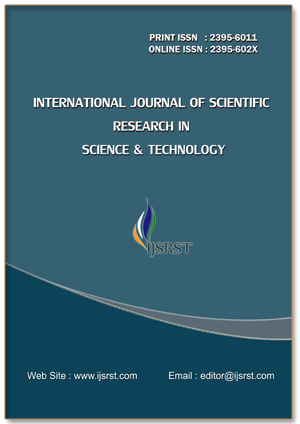Stress Detection in IT Professional by Image Processing and Machine Learning
Keywords:
Mine detection, machine learning approaches, deep learning models, k-nearest neighbors (knn), convolutional neural networks (cnn) in emotion recognition, physiological parameters, face expression analysis about DeepFace, mental health, non-invasive detection, image processing, biometric dataAbstract
The detection of stress levels in an employee of the IT industry can become one great measure to ensure mental wellness and productivity of these employees, while modern technology has evolved rhymingly with another concern. The project under consideration proposes an integrated machine learning image processing method that works for efficient prediction of stress. Initially-a K-Nearest Neighbors algorithm trained with certain physiological parameters such as snoring range, respiration rate, body temperature, number of sleeping hours, and heart rate-for the early recognition of stress symptoms. In addition, there will be an experimental model based on Convolutional Neural Networks for emotion graph classification from facial expressions for sensing these stress indicators. Integration with an online camera module allows further real-time online monitoring of stress percentages based on facial recognition. Hence, by merging physiological signal analysis and image-based emotion recognition, the totality of this framework constitutes a complete non-invasive stress detection scheme. The innovation aims to assist in the proactive handling of stress by IT professionals, thereby ensuring better workplace performance.
📊 Article Downloads
References
Archana, V. R., & Devaraju, B. M. (2020). Stress Detection through Machine Learning Techniques. International Journal of Research in Engineering, Science and Management, 3(8), 251-256. https://journal.ijresm.com/index.php/ijresm/article/view/171
(2025). Real-Time Stress Detection Using Facial Emotions via CNN and Haar Cascade in AI Systems. ResearchGate. https://www.researchgate.net/publication/386331340_T owards_Real-Time_Facial_Emotion- Based_Stress_Detection_Using_CNN_and_Haar_Casca de_in_AI_Systems?utm_source=chatgpt.com
Kumar Babu, M. S., Shravya, T. S., Bhuvaneswari, & Sharanya, V. (2024). Stress Recognition among IT Professionals using Image Processing and Machine Learning Methods. International Journal of Mechanical Engineering Research and Technology, 16(9), 172-179. https://ijmert.com/index.php/ijmert/article/view/255
Rahim, A., Ahari, L., Bhumika, G., & Jyothi, G. D. (2023). Image Processing and Machine Learning for Stress Detection in IT Professionals. International Journal of Marketing Management, 11(2), 51-57. https://ijmm.in/index.php/ijmm/article/view/103
Burkert, P., Trier, F., Afzal, M. Z., Dengel, A., & Liwicki, M. (2015). DeXpression: A Deep CNN for Expression Recognition. https://arxiv.org/abs/1509.05371v2
Pravallika, T., Sreeramulu, G., & Albert, D. W. (2024). Utilizing Image Processing and Machine Learning to Detect Human Stress. International Journal of Information Technology and Computer Engineering, 12(3), 69-77. https://ijitce.org/index.php/ijitce/article/view/644
Nilanjana, M., Poojashri, V., Umapriya, R., Vikashini, D. V., & Krishnapriya, N. (2021). Stress Detection Based on Machine Learning and Image Processing. International Journal of Research in Engineering, Science and Management, 4(6), 222-226. https://journal.ijresm.com/index.php/ijresm/article/view/880
Bhagat, D., Vakil, A., Gupta, R. K., & Kumar, A. (2024). Facial Emotion Recognition Using Convolutional Neural Networks (CNN). Procedia Computer Science, 235, 2079-2089. https://doi.org/10.1016/J.PROCS.2024.04.197
Ramdhani, B., Djamal, E. C., & Ilyas, R. (2017). Convolutional Neural Networks for Facial Expression Recognition. In Proceedings of the 2018 International Symposium on Advanced Intelligent Informatics, 96-101. https://doi.org/10.1109/SAIN.2018.8673352
Sarvakar, K., Senkamalavalli, R., Raghavendra, S., Kumar, J. S., Manjunath, R., & Jaiswal, S. (2019). Facial Emotion Recognition using Convolutional Neural Networks. Materials Today: Proceedings, 80, 3560-3564. https://doi.org/10.1016/j.matpr.2021.07.297
Anthony, B., Lienardi, N. D., Sutanto, R. E., & Dinata, Y. M. (2024). Comparison of Deep Learning Models for Emotion Classification with Image Preprocessing Techniques. INSYST: Journal of Intelligent Systems and Computation, 6(2), 87-94. https://doi.org/10.52985/INSYST.V6I2.398
(2025). Is Feature Scaling Necessary for the KNN Algorithm? Forecastegy. https://forecastegy.com/posts/is-feature-scaling- required-for-the-knn- algorithm/?utm_source=chatgpt.com
Pitaloka, D. A., Wulandari, A., Basaruddin, T., & Liliana, D. Y. (2017). Enhancing CNN with Preprocessing for Automatic Emotion Recognition. Procedia Computer Science, 116, 523-529. https://doi.org/10.1016/J.PROCS.2017.10.038
Issa, D., Demirci, M. F., & Yazici, A. (2020). Speech Emotion Recognition Using Deep Convolutional Neural Networks. Biomedical Signal Processing and Control, 59, 101894. https://doi.org/10.1016/J.BSPC.2020.101894
Alsubai, S. (2022). Emotion Detection Using a Deep Attention-Based Neural Network and Modified-Random Forest. Sensors (Basel), 23(1), 225. https://doi.org/10.3390/S23010225
Downloads
Published
Issue
Section
License
Copyright (c) 2025 International Journal of Scientific Research in Science and Technology

This work is licensed under a Creative Commons Attribution 4.0 International License.
https://creativecommons.org/licenses/by/4.0




